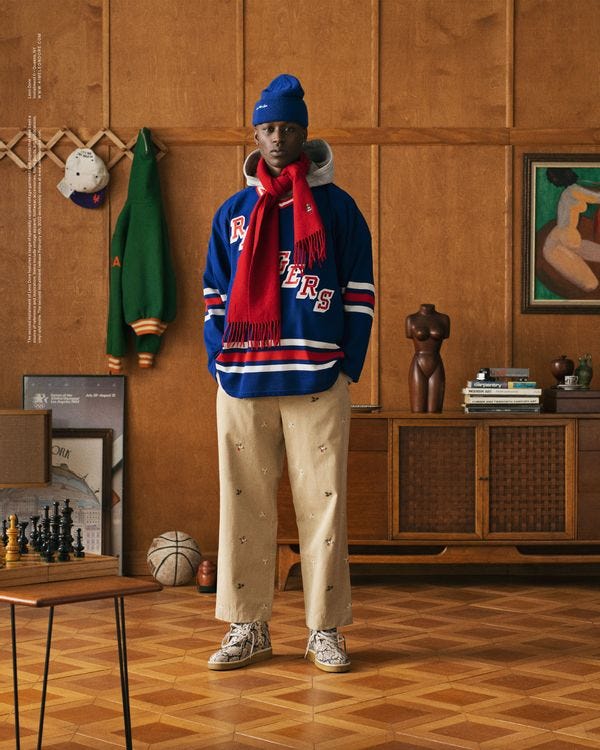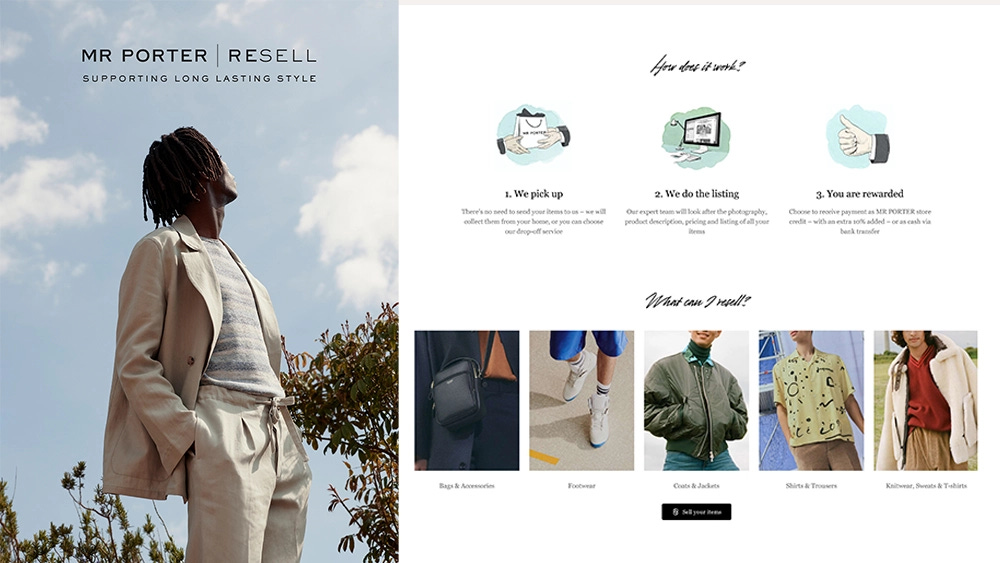The state of secondhand and vintage shopping
Some light reporting on where things are at and where we're going
It’s all in the details

A few thoughts
The rise of secondhand clothing (as a commodity) has been fascinating to watch over the last 15 years. Vintage as a term has so many layers to it, and deciding what counts as vintage versus not is also complicated. In general, the last decade of secondhand and resale has been defined by platforms and marketplaces:
High-end reselling (The RealReal, Poshmark, etc)
Streetwear and sneaker reselling (GOAT, StockX)
Vintage/grail reselling (eBay, Grailed, Depop)
The common thread between all these names above is that they’re platform-centric. Building marketplace infrastructure (excluding eBay since they’re OG OG) helped facilitate discovery and transaction between buyers and sellers.
And as we look to the next wave of secondhand, community, serendipity, and curation will become increasingly important.
So, part of this is a review of what’s happening in the secondhand/resell market, and another part of this is focused on how community and curation are playing a part in this next wave.
1. Brands riding nostalgia
At a time when a lot of traditional American brands have struggled to connect with consumers in the last decade (i.e. BR, Gap, J.Crew, etc), those same brands are tapping into older collections, or stuff from their archives, to reconnect customers—old and new—to the past.
The good old days.
Tommy Hilfiger x Depop
Tommy Hilfiger made a brand account on Depop and listed a collection of pre-worn Tommy pieces on the site.
J.Crew
J.Crew—who has so much good stuff from the 80s and 90s—also brought back pieces from the archives, focusing on handpicked, rare items, and only available in-store at their men’s shop on Bowery.
Leon Dore
Aimé Leon Dore even has their own vintage shop. The catch is that it’s not their stuff; it’s an assortment of vintage pieces from over the map. Baby Jordans to Persian rugs. Woolrich shirts to New York Rangers hockey jerseys.
There are some fantastic pieces in each drop, and they do a nice job curating it. Still, though, these drops serve as a way to connect the consumer to the world with which ALD wants them to be associated. A nostalgia that doesn’t exist.
2. Selling your closet
This is another big one. Influencers listing their closets for sale on Depop or Poshmark used to be more of *a thing* from my memory. What I’m seeing now is that influence and community are the differentiators to selling your closet. We see it from the very top to the very niche.
JOOPITER by Pharrell
I hope you enjoyed this as much as I did, because my god Pharrell had quite the one-of-a-kind collection of, well, everything... Rarest sneakers, the finest jewelry. Hell, he even sold a Louis Vuitton trunk (a foreshadowing of what was to come!).
Make Garage Sales Cool Again
Who would’ve thought garage sales would become the third spaces to hang out in 2023?
See/Know—an eCommerce fashion platform—teamed up with Jian DeLeon (Nordstrom’s fashion director) to sell sought-after pieces from his wardrobe. Then Basic Space, another creator-focused platform that sells your stuff for you, collab’d with Throwing Fits to do a bloc party and sell their closets.
Then there’s The Menswear Garage Sale, run by a group of Menswearheads in NYC, where they get together with friends and fellow jawns enthusiasts to sell their closets. I personally love seeing this happen because the clothes are a byproduct of friendship and community.
3. White-glove services
There are also platforms offering end-to-end management for you to sell your closets.
Which sounds nice, but seems also complicated from an outside perspective. The potential issues I see with this (if it’s going to work long-term) are that you need to sort out two things:
The logistics need to scale—i.e. that when you’re dealing with 10,000 items at a time, you can coordinate how to pick up, drop off, photograph, list, sell, and ship seamlessly
The margins need to work—meaning, you can’t just sell Levi’s or a pair of sambas. The pieces need to be either a) unique enough or b) expensive enough that the resell value holds its weight from customer to customer.
MARRKT is a UK-based company offering this. And there are some lovely collections on the website. They handle everything, from pre-vetting your pre-worn items, pick them up for you, and getting them listed on their website. The revenue model is a commission split.
Mr. Porter offers a similar model called Reflaunt. You can send them your pre-worn clothes in exchange for store credit.
Both of these platforms launched a while ago, and I’m not sure how it’s going but they’re still around!
4. Aggegration services
Some tools connect all the shopping marketplaces together, allowing you to filter and refine the items and brands you’re looking for. I think this is a clever model, though I find it hard to know how this scales by just taking an affiliate cut on transactions.
I could see this working best for some buyers, but mostly with sellers who want to find the best deals on rare items so they can turn around and flip them to existing audiences/communities.
5. Curation-as-a-service
This feels like a no-brainer to mention because curation is so cornerstone to vintage in some ways, but it feels like most vintage shops carry whatever they can get their hands on. And the curation sucks. So I appreciate resellers who focus on their niche and grow it from there.
A few that I like are Good Form Vintage out of Chicago.
Cale, the owner, rounds up the best of American sportswear and sells on his site, where sellers like No Maintenance in Los Angeles focus on stuff like Carhartt Detroit jackets, military wares and good denim.
Even platforms like Deadstock Official are notorious for carrying coveted pieces from brands like Stone Island, The North Face, and so on, which can be hard to get your hands on without paying an arm and a leg.
So that’s my primer on secondhand and reselling right now. What are some other things you’re seeing that are worth mentioning here?











Great review of secondhand dynamics. I have to admit I'm hooked on Poshmark at the moment, and one of the things it offers is the chance to 'LaLa' your wardrobe. Remember LaLa? the CD swapping service? Probably not, but basically you listed your CD shelf much like your closet, and could cycle out stuff you didn't listen to for stuff you wanted. I took my entire college-era collection (U2, REM, and the like will always be wanted by someone apparently) and transformed it to everything exciting and current in hip-hop and indie rock at the time. Poshmark has the same potential for your wardrobe. As one zeroes in on specific brands, fits, and items that work for them - it's a great way to cycle out the stuff you don't want and cycle in what you do.
Love the garage sale shout-out, and the Alfargo's photo!